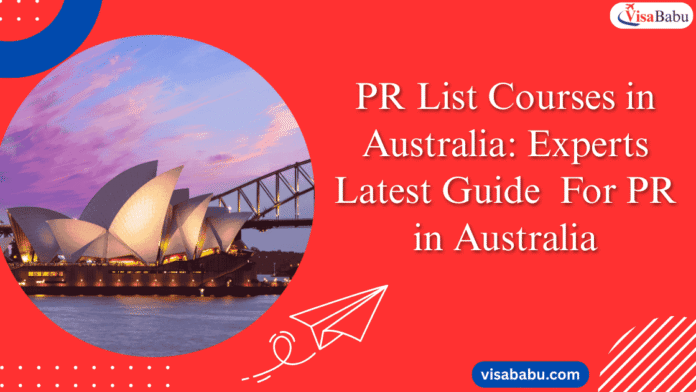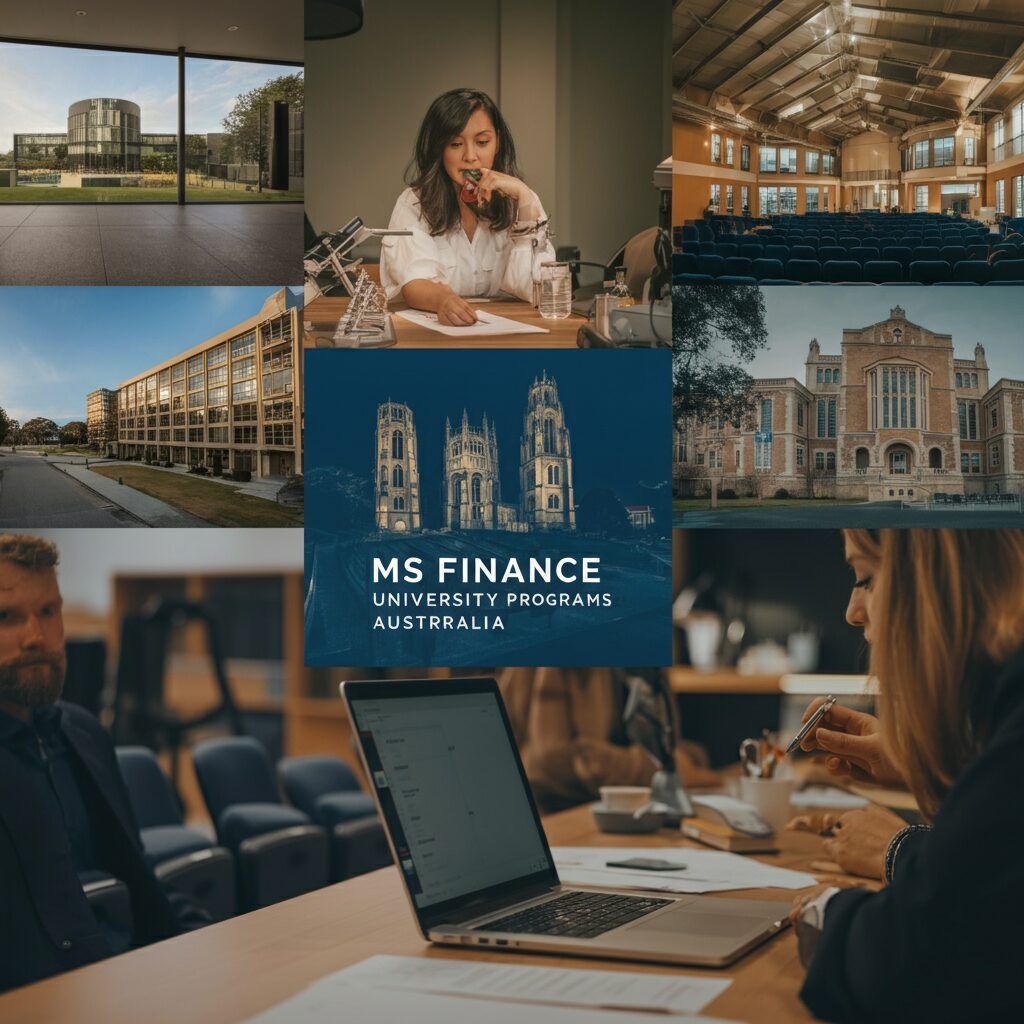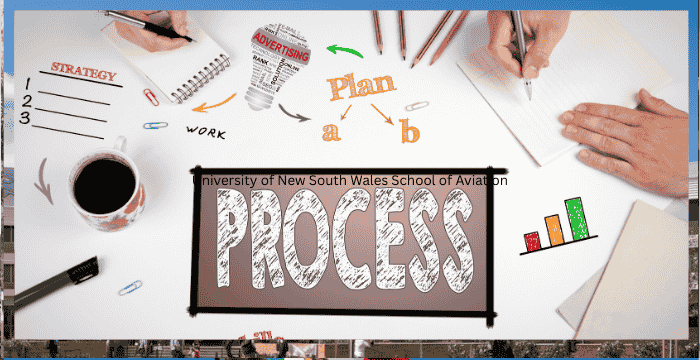Permanent residency in Australia becomes an objective if you are interested in making your Australian education permanent. The Australian job market expansion and simplified PR procedures make the correct educational program your entry ticket to reside permanently in this country. Skilled migrants will remain welcome in Australia through 2025 as the government maintains a pathway to permanent residency for those included in more than 200 skilled professions listed on the occupation list. This comprehensive guide explores the latest PR list courses in Australia, helping you make an informed decision about your education and migration journey.
What Are PR List Courses in Australia?
PR list courses in Australia are educational programs specifically aligned with Australia’s Skilled Occupation List (SOL) and Medium and Long-term Strategic Skills List (MLTSSL). The specific courses prepare international students for employment needs in Australia by offering permanent residency eligibility following graduation.
Studying a course from the PR List in Australia results in qualifications matching professions the Australian government recognises as necessary for national economic expansion. Your educational qualifications, which align strategically with Australian workforce requirements, will boost your prospects for permanent residency through the skilled migration program.
This makes graduates from specified qualifications more eligible for Australian points-based migration according to the system, while additional experience and English skills further enhance their points. Military and government organisations recognise that selecting a PR List course will grant you the benefit of equipping yourself with knowledge that leads to permanent residence in Australia.
Top PR List Courses in Australia for 2025?
Australia updates its skilled occupation lists regularly, which mirror workforce requirements adjustments. Several fields offer excellent potential as PR entry points for overseas students who wish to pursue permanent residency in 2025. Let’s explore Australia’s top pr list courses and why they offer excellent migration prospects.
Healthcare and Nursing
Nursing is the leading healthcare profession, which will pave the way toward Australian permanent residency in 2025. The Health Workforce Strategy of the Australian Government predicts nurses will be in short supply by 85,000 positions in 2025, which will expand to 123,000 by 2030, thus opening up exceptional career opportunities for international nursing graduates.
Australian education offers three basic nursing courses, which include Bachelor of Nursing and Master of Nursing Practice, along with specialised postgraduate nursing qualifications in mental health care and aged care services, together with critical care practices. These nursing programs approximately cost AUD 25,000 to 38,000 (INR 13.7 to 22 lakh) per year before leading students toward roles that start at AUD 60,000 to 75,000 annually.
The rising number of elderly citizens and strong demand for aged care specialists create excellent opportunities alongside promising prospects in mental health nursing. The health care sector welcomes nursing graduates to provide services in public hospitals and private clinics, together with aged care centres and community health care services,s. At the same time, regional staffing allows extra points toward permanent residency.
Engineering (Civil, Mechanical, Electrical, etc.)
Engineering fields persistently figure in Australia’s skilled migration program because they support building new infrastructure and expanding the country’s industries. Four engineering disciplines, including civil, mechanical, electrical and software, have surged in demand for 2025.
Students pursuing Engineering PR programs in Australia must budget AUD 40,000-43,000 (equivalent to INR 22-23.7 lakh) annually for studying at prestigious Australian education institutions. Engineering graduates can anticipate initial salaries in the range of AUD 70,000-90,000, and established professionals earn more than AUD 100,000.
The ongoing Australian infrastructure projects, together with the renewable energy goal,s drive the high demand for civil engineers and electrical engineers. Successful graduates of mechanical and software engineering will find lucrative career paths in manufacturing, mining, technology, as well as other sectors.
Information Technology (IT) and Computer Science in 2025
The technology sector in Australia expands by 8% per year, which produces an increasing need for professionals in multiple IT fields. In 202,5, the valuable skills for the workforce will include data science alongside cybersecurity and software development with cloud computing.
Three main IT PR courses operate in Australia through the Bachelor of Computer Science, together with the Master of Information Technology and specialised programs in artificial intelligence, data analytics, and network security. IT study programs in Australia demand annual fees of AUD 42,000-43,000 (INR 23-23.7 lakh), resulting in entry-level positions offering salaries between AUD 65,000-80,000.
The workforce of software developers, cybersecurity specialists, data scientists and IT project managers operates extensively within major cities and emerging tech hubs of Australia. IT professionals continue to be in demand due to Australian government digital transformation activities, making these study programs ideal for students pursuing PR status.
Business, Accountancy, and Finance
The Australian job market consistently requires business and finance professionals, and accountants and finance managers keep appearing on PR lists. Australia’s economic expansion depends on these specialist roles, which deliver services throughout business sectors and to individual customers.
Multiple accountancy qualifying programs exist in Australia, including a Bachelor of Accounting, a Master of Professional Accounting, and dual degrees in business/finance. Attendees at Australian accounting programs should prepare for tuition fees amounting to AUD 30,000-38,000 (INR 16.5-21 lakh) while new graduates receive salaries starting at AUD 60,000-75,000.
Graduates who pursue accounting as their major option can select jobs either in public practice or corporate finance, taxation, or management accounting, while finance specialists can find employment opportunities in banking, investment and financial planning roles. The professional certifications acquired from CPA Australia or Chartered Accountants ANZ help to boost possibilities for international PR.
Education and Teaching
A substantial teacher shortage affects Australia because it creates over 10,000 teaching positions empty throughout all levels of education, from early childhood to secondary. Because of the substantial shortage of teachers, qualified instructors can obtain exceptional professional relocation positions, particularly those willing to work in locations outside main cities.
The teaching PR courses in Australia consist of Bachelor of Education and Master of Teaching programs, coupled with specialised training programs for various educational levels. An Australian education at this level will cost between AUD 30,000 and AUD 34,000 per year (INR 16.5-19 lakh) before students earn their beginning salary of AUD 65,000 to AUD 75,000.
Trade Qualifications (Plumbing, Carpentry, Automotive, etc.)
Early childhood teaching positions are in demand in the market alongside secondary teaching jobs in mathematics, science, and language. The Provisional Resident visa list includes both university lecturers and vocational education teachers who enable people to pursue academic education careers.
Trade qualifications represent a cost-effective method to become an Australian permanent resident by 2025. Plumbing, carpentry, electrical, and automotive mechanic jobs need numerous professionals to fill the extensive vacancies throughout metro and rural Australia.
Students who want to study trade PR in Australia should complete Certificate III or IV qualifications, followed by apprenticeships or further diplomas. The total cost of trade qualification programs in Australia falls between AUD 5,000-15,000 (INR 3-7 lakh), which delivers earnings of AUD 60,000-90,000 after graduation.
Plumbing and electrical trades possess excellent PR possibilities due to their robust market demand, and construction management is an opportunity path for further advancement. Trade industry qualifications can be finished within 2 to 4 years, whereas some university programs take longer to grant PR eligibility.
Social Work and Community Services

The Social work PR programs in Australia deliver Bachelor of Social Work and Master of Social Work training, which costs between AUD 30,000-35,000 (INR 16.5-19.3 lakh) annually. Social work majors entering the workforce can anticipate initial remuneration between AUD 65,000 and AUD 75,000, which leads to employment avenues in government agencies as well as healthcare facilities and non-profit institutions.
Social workers who specialise in aged care and disability services, together with child protection, have high employer demand, and regional placements lead to added points for permanent residency. Earning a Master of Social Work degree from the University of Melbourne establishes students for exceptional career success with a potent path toward Australian permanent residency.
Eligibility Criteria and PR Points System in 2025
The Australian immigration system requires skilled migrants who finish pr list courses to obtain permanent residency by meeting eligibility standards and earning sufficient points using the points assessment system.
Competitive skilled migration candidates must score at least 75 to 80 points, whereas the minimal requirement stands at 65 points. Points are awarded based on:
| Category | Criteria / Points |
|---|
| Minimum Points Required | 65 points (minimum) 75–80 points (competitive) |
| Age | Up to 30 points (Best: Ages 25–33 = 30 points) |
| English Language Proficiency | Up to 20 points (IELTS 8.0 or equivalent = 20 points) |
| Educational Qualifications | – Diploma = 10–15 points – Bachelor’s = 15 points – Master’s/PhD = 20 points |
| Work Experience | – 3–5 years overseas = 5–10 points – 5–8 years in Australia = 10–15 points |
| Australian Study Requirement | 5 points (2+ years of study in Australia) |
| Regional Study | An additional 5 points for study in a designated regional area |
| Professional Year Program | 5 points (for accounting, IT, and engineering graduates only) |
| Partner Skills / Single | – 10 points for a partner with eligible skills – 10 points if single |
| Skills Assessment | Mandatory — Must be positive in a nominated occupation on the SOL or MLTSSL |
| English Requirement | Minimum IELTS 6.0 or equivalent (mandatory) |
Additional
- Age (maximum 30 points for ages 25-33)
- English language proficiency (up to 20 points for superior English)
- Educational qualifications (15-20 points)
- Work experience (5-20 points)
- Australian study (5 points)
- Regional study (5 additional points)
- Professional year completion (5 points)
- Partner skills or single status (10 points)
Almost every PR pathway demands that candidates fulfil a skills assessment regarding their occupation and show language proficiency at IELTS 6.0 or equivalent level. Your eligibility for the Australian Permanent Residency conditions greatly improves when you choose courses that match your SOL or MLTSSL occupations.
Step-by-Step Guide: How to Apply for PR List Courses in Australia in 2025
Moving between picking courses and PR applications involves thorough planning for success. Here’s a step-by-step guide to help you apply for pr list courses in Australia:
- The SOL/MLTSSL lists occupations employers need through research so that you can identify suitable roles based on your skills and preferences.
- Make your selection based on programs that provide qualifications for your occupational target.
- Compare universities and locations: Consider institution rankings, course quality, and regional bonuses for PR.
- You must verify that you fulfil both academic standards and English language criteria.
- Upon securing the student visa (subclass 500), prepare financial paperwork alongside health insurance, along with conclusive enrollment documents.
- Students should finish their academic program while meeting all necessary academic requirements and attendance standards.
- You should obtain a Post-Study Work visa because it provides opportunities to obtain Australian work experience following graduation.
- You must have the necessary qualifications assessed through a skills assessment performed by professional organisations that are related to your field.
- Apply for the Expression of Interest through the SkillSelect platform while declaring your points.
- Invited applicants need to file their official PR application, accompanied by required documentation, after receiving the invitation.
Your visa processing and total educational duration determine how long it takes you to get PR, between 3 and 5 years after starting your course.
Top Universities Offering PR List Courses in Australia in 2025
The educational institutions in Australia maintain global standards while providing high-quality programs within multiple academic fields. Several leading institutions in different fields exist as shown below:
- For Healthcare and Nursing:
- University of Sydney (QS Ranking: #41)
- University of Melbourne (QS Ranking: #33)
- University of Technology Sydney (QS Ranking: #137)
For Engineering:
- University of New South Wales (QS Ranking: #45)
- University of Queensland (QS Ranking: #50)
- University of Adelaide (QS Ranking: #109)
For IT and Computer Science:
- Australian National University (QS Ranking: #30)
- University of Melbourne (QS Ranking: #33)
- University of Sydney (QS Ranking: #41)
For Business and Accounting:
- University of Melbourne (QS Ranking: #33)
- University of New South Wales (QS Ranking: #45)
- Monash University (QS Ranking: #57)
For Education and Teaching:
- University of Melbourne (QS Ranking: #33)
- Monash University (QS Ranking: #57)
- University of Queensland (QS Ranking: #50)
Regional universities like Charles Darwin University, James Cook University, and the University of Newcastle offer additional PR advantages through regional study points, often with lower tuition fees and cost of living.
Also Read: Level 1 Colleges in Australia: Experts’ Latest List
Costs, Duration, and Expected Salaries for PR List Courses in 2025
Understanding the financial aspects of studying pr list courses in Australia is crucial for planning your education and migration journey. Students should know the following information about PR List courses in terms of expenses and duration, together with expected salaries:
The categories of PR courses, annual tuition rates, course durations, and starting salaries expressed in Australian dollars (AUD) form this table.
| PR Course Category | Tuition Cost (Annual) | Duration | Starting Salary (AUD) |
| Medicine & Dentistry | INR 38L-76L | 4-6 years | 75,000-95,000 |
| Nursing | INR 13.7L-22L | 2-3 years | 60,000-75,000 |
| Engineering | INR 22L-27L | 3-4 years | 70,000-85,000 |
| IT & Computer Science | INR 23L-28L | 2-3 years | 65,000-85,000 |
| Business & Accounting | INR 16.5L-21L | 2-3 years | 60,000-75,000 |
| Education & Teaching | INR 16.5L-19L | 1-2 years | 65,000-75,000 |
| Trade Qualifications | INR 3l-7l (total) | 1-4 years | 60,000-80,000 |
| Social Work | INR 16.5L-19.3L | 2-4 years | 65,000-75,000 |
The additional costs for living consist of annual expenses between AUD 20,000 and 25,000, together with yearly health insurance fees ranging from AUD 500 to 700, along with visa application charges. However, these investments are offset by Australia’s high salaries and quality of life, making pr list courses in Australia a valuable long-term investment.
Latest Trends and Updates in PR List Courses (2025)
The Australian immigration landscape continues to evolve, with several significant developments affecting pr list courses in Australia in 2025:
- The extended Post-Study Work Rights policy enables diplomas from specific fields to extend work permit periods for bachelor’s graduates to 4 years instead of 2 to 3 years and for master’s and doctorate graduates to reach 6 years.
- Students enrolled in courses in Australian regional areas keep getting extra points for permanent residency applications and enjoy longer post-graduate work permissions.
- The nursing industry, together with healthcare, stands out as a priority field that receives rapid visa processing and bonus provisions for qualified professionals.
- The government established quick routes to obtain trade qualifications because they are essential to filling vital vacant positions.
- At the top of the priority list stand IT professionals working in cybersecurity, together with data science and AI experts, who receive priority visa processing in addition to extra points.
- The immigration system now offers graduates from high-demand fields simplified applications, faster administrative processing, and decreased administrative requirements.
Conclusion
Deciding on the right pr list course in Australia is shaping your education, career and migration experience. The course should be ideal, one that combines both your interests and skills as a person, as well as Australia’s workforce and PR opportunities.
Think about your academic background, the career for which you are aspiring, current financial resources and how they affect your resources if you opt to take it, and how much time you have to finish the degree. Take time in researching the university thoroughly, connect with alumni if possible and seek guidance from education and migration experts for an informed decision.
And remember that investment in the right skills at the right time is a sound strategy, even if the PR pathway for them changes. It is to map out your Australian dream that 2025 will remain an excellent time to go after it via strategic course selection.
If you take a course which is relevant to your passions as well as Australia’s needs, you aren’t just getting an education, you’re investing in a lifetime of work and life in one of the most livable countries in the world.
(FAQS) Frequently Asked Questions
Q1.What course is recommended for PR in Australia in 2025?
There are critical skill shortages, and critical skill shortages imply possibilities to cash in on public relations, making nursing, IT, engineering and trade qualifications the strongest PR prospects in 2025. Based on your background, skills, and interests, however, your best choice depends on your long-term career satisfaction, where success in your field is very important.
Q2.What is the number of points needed for Australian PR in 2025?
The competitive application minimum threshold remains at 65 points, but one can be competitive if they score 75-80 points or higher. Points are awarded depending on age, English proficiency, education, work experience, and some other characteristics.
Q3.How to work while studying a PR course?
Yes, student visa holders can lawfully work up to 48 hours per fortnight in term time and unlimited hours during scheduled breaks. It offsets the living expenses while acquiring valuable Australian work experience.
Q4.How many years does it take to get PR by finishing a course in Australia?
The time it takes you to start your course until getting PR is usually 3 – 5 years (or the length of the program period, the post-study work experience and the visa processing time).
Q5.Is there any guaranteed PR course in Australia?
Due to changing immigration policies and occupation lists, there is no guarantee of PR. However, courses that align with the SOL and MLTSSL stand out the strongest on the basis of good English skills and the right work experience.
Q6.Is there a PR course to study in Australia, and can it be studied with family too?
In answer to your query, you can include your spouse and dependent children on your student visa application. Depending on the level of the course you study, you could also apply for your spouse to work in Australia.














